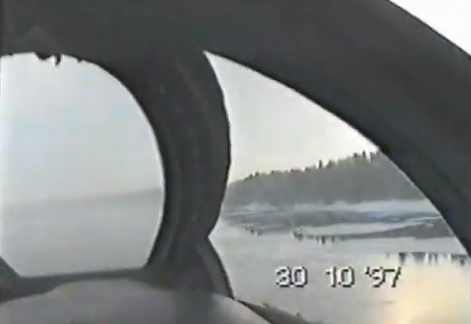Awesome video of the MiG-25 Foxbat flying at very high speed and ultra low altitude some years ago in Russia.
The Mikoyan-Gurevich MiG-25 is a Soviet-era supersonic interceptor equipped with a powerful radar, four air-to-air missiles and a top speed of Mach 3.
The PD was an improved variant of the aircraft introduced at the end of the 1970s with R-15BD-300 engines and new N-005 Saphir-25 (RP-25M) Pulse-Doppler radar.
Designated Foxbat-E by NATO, these fast fighter planes conducted ultra-low level training missions (like those flown today by the Russian Air Force jets); the following video, with footage filmed in various periods, from the end of the 1980s to the end of the 1990s, shows some treetop flying, aerobatics and formation flying.
Some MiG-25RBs, reconnaissance-bomber derivative of MiG-25R, a high-altitude daylight reconnaissance aircraft, are believed to be still in service with the Russian Air Force.









